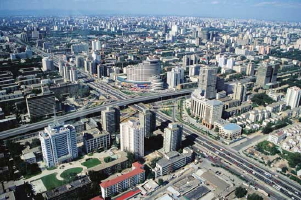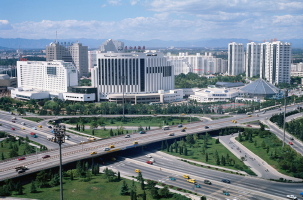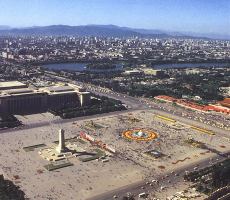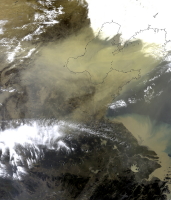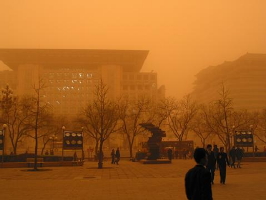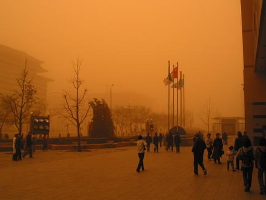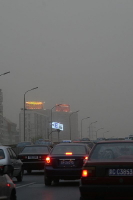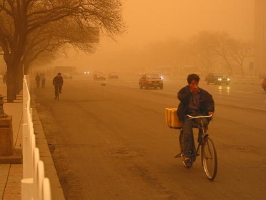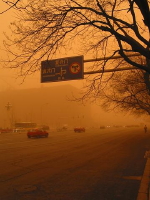Beijing
Click
images to enlarge.
|
Located
in the northeastern corner of China, Beijing is roughly at the
same latitude as New York City. It is a large metropolis with
over 3000 years of history. Beijing was the capital of the Yuan,
Ming and Qing dynasties and from here 34 emperors ruled China.
A long history has left famous historical sites of great aesthetic
and cultural interest. Ahead of the 2008 Olympics, the capital
is racing to complete an array of new and improved facilities
in the metropolis, which will combine modern skyscrapers with
historical architecture, to distinguish itself from other cities
of world fame.
|
For
most of us, the city is symbolized by
Tiananmen square,
the largest public square in the world.
Click
image to enlarge.
or
the Forbidden City
Click
images to enlarge.
For
many Chinese, it is the
Hutong
that comes to mind.
Click
image to enlarge.
For
others, it is the thought of the terrible
Dust Storms,
one of which had hit the city just the week before our arrival.
Then, the worst one in five years hit Beijing just a week after
we left the city!
Luck was indeed with us!
Satellite photo of the April 16, 2006, dust storm
(The Yellow Sea is drawn over that area.)
Click
image to enlarge.
|
Sandstorms
in China
In
2005, a Nature paper examined China’s changing environment.
Partially worsened by human actions such as overgrazing and
grassland degradation, dust storms began to increase in the
20th century. Between AD 300 and 1949, northwestern China saw
a dust storm on average every 31 years. After 1990, the average
jumped to one such storm per year. According to news reports,
at the time this storm hit, the average rate of dust storms
for the Beijing region (in northeastern China) was five or six
a year. This storm was the eighth to hit the region in 2006.
(from http://earthobservatory.nasa.gov/Newsroom/NewImages/images.php3?img_id=17249)
Sandstorms
have been a problem for centuries in Beijing, which is shielded
from the encroaching desert only by a range of mountains to
the north-west. But industrialisation, over-extraction of water
from aquifers and rivers, and over-ambitious attempts to develop
agriculture in the north-west of the country have hugely increased
the size of the country's deserts. Repeated attempts to hold
back the tide of sand have involved the planting of more than
40 billion trees across northern China. But environmentalists
have warned that many have died, and while those that survived
may have shielded the capital from the worst of the sand in
the last five years, they may have drained more water from the
soil, making things worse in the long run. (from Telegraph.co.uk.
April 18, 2006)
|
(Borrowed photos)
Click
images to enlarge.
Click
images to enlarge.
| China
has gone through extraordinary changes over the last 30 years.
Since the death of Mao Zedong in 1976 the People's Republic of
China has become a heavily industrialized and capitalist society,
though a majority of the 1.3 billion inhabitants still live in
rural poverty. Until the mid-1980s China was a closed country,
with rare visits from foreigners. Now it is rapidly becoming one
of the world's biggest tourist destinations. The signs of growth
are everywhere, as are the growing pains. |
For short videos of Beijing
and a preview of some of its major sights...
Click
here
Continue
into Beijing...
Click
here.
|
